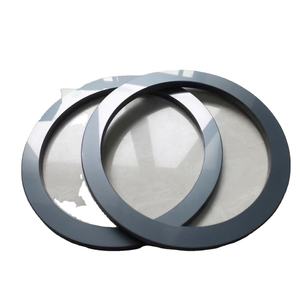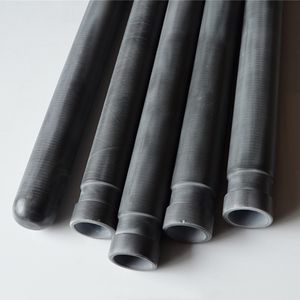Discover Premium Ceramic Products | Durability & Elegance United | Advanced Ceramics
PRODUCT PARAMETERS
Description
Overview of Silicon Carbide Ceramics
Silicon Carbide (SiC) ceramics are renowned for their outstanding mechanical properties, including high hardness, strength at elevated temperatures, and excellent thermal shock resistance. These materials are pivotal in cutting-edge industrial applications, from abrasives to aerospace components, due to their unique combination of properties.
Features of Silicon Carbide Ceramics
High Hardness: Exceptional wear resistance.
Thermal Shock Resistance: Can withstand rapid temperature changes.
Chemical Stability: Resistant to most chemicals.
High Thermal Conductivity: Efficient heat dissipation.
Low Density: Lightweight for its strength.
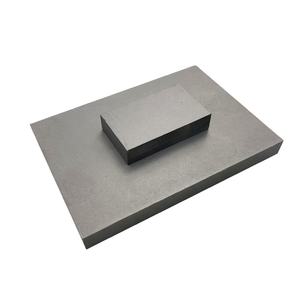
(Silicon Carbide (SIC)Refractory Ceramic Plate)
Specification of Silicon Carbide (SIC)Refractory Ceramic Plate
Silicon Carbide (SiC) refractory ceramic plates are engineered for extreme environments. The material combines silicon and carbon in a strong covalent bond. This structure gives the plates exceptional durability. They handle temperatures up to 1650°C without deforming. Thermal conductivity is high compared to other ceramics. Heat distributes evenly across the surface. Rapid temperature changes cause minimal stress. Thermal shock resistance is a key advantage.
Mechanical strength is superior. SiC plates resist cracking under heavy loads. Hardness levels exceed most metals. Wear resistance makes them ideal for abrasive settings. Chemical stability is another benefit. Acids, alkalis, and molten metals rarely damage the surface. Corrosion is minimized even in harsh industrial processes.
Electrical properties vary with composition. Some grades act as semiconductors. Others provide insulation. This flexibility suits diverse applications. Custom sizes and thicknesses are available. Standard plates range from 5mm to 50mm thick. Surface finishes include polished or textured options. Mounting holes or grooves can be added for installation.
These plates are used in furnaces, kilns, and reactors. Metal processing industries rely on them for lining molten metal containers. Chemical plants use them in reaction chambers. High-temperature filters and heat exchangers benefit from their thermal efficiency. Long service life reduces replacement costs. Maintenance needs are low compared to traditional materials.
Performance depends on purity and manufacturing methods. High-purity SiC offers better thermal and chemical resistance. Sintered plates have uniform density. Reaction-bonded versions include free silicon for added toughness. Testing ensures compliance with industry standards. Quality checks cover porosity, strength, and thermal stability.
Customization is possible for specific requirements. Engineers can adjust composition or dimensions. Technical support helps optimize plate selection. Compatibility with existing systems is prioritized. Safety and efficiency drive design choices.
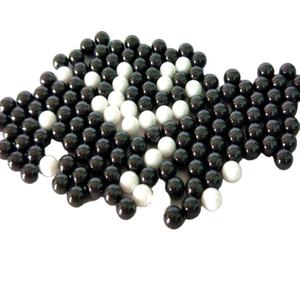
(Silicon Carbide (SIC)Refractory Ceramic Plate)
Applications of Silicon Carbide (SIC)Refractory Ceramic Plate
Silicon carbide (SiC) refractory ceramic plates are widely used in industries requiring materials that handle extreme conditions. These plates excel in high-temperature environments due to their thermal conductivity, durability, and resistance to thermal shock. They maintain structural stability under rapid temperature changes, making them ideal for demanding applications.
In metallurgy, SiC ceramic plates line furnaces and kilns. They withstand prolonged exposure to molten metals and slag. Their chemical inertness prevents reactions with corrosive substances, ensuring long service life. They also serve as components in metal-forming tools, reducing wear and energy consumption during production.
The aerospace industry relies on SiC plates for components in rocket engines and thermal protection systems. They tolerate intense heat during re-entry or propulsion, protecting critical parts from degradation. Their lightweight nature helps reduce overall system weight, improving fuel efficiency.
Energy sectors use SiC plates in nuclear reactors and solar power systems. They manage heat transfer in reactor cores and shield sensitive equipment from radiation. In solar thermal applications, they concentrate sunlight efficiently, boosting energy conversion rates. Their stability under irradiation ensures consistent performance over time.
Semiconductor manufacturing benefits from SiC plates as wafer supports during high-temperature processes. They resist chemical corrosion and thermal stress in etching or deposition stages, ensuring precise production conditions. Their electrical insulation properties prevent interference in delicate electronic components.
Chemical processing plants employ SiC plates in reactors and pipelines handling aggressive acids or alkalis. They prevent leaks and contamination, maintaining operational safety. Their abrasion resistance suits slurry transport systems, minimizing maintenance needs.
SiC refractory ceramic plates are essential in environments where conventional materials fail. Their versatility across industries highlights their role in advancing technology and industrial efficiency.
Company Introduction
Advanced Ceramics founded on October 17, 2014, is a high-tech enterprise committed to the research and development, production, processing, sales and technical services of ceramic relative materials and products.. Since its establishment in 2014, the company has been committed to providing customers with the best products and services, and has become a leader in the industry through continuous technological innovation and strict quality management.
Our products includes but not limited to Silicon carbide ceramic products, Boron Carbide Ceramic Products, Boron Nitride Ceramic Products, Silicon Carbide Ceramic Products, Silicon Nitride Ceramic Products, Zirconium Dioxide Ceramic Products, Quartz Products, etc. Please feel free to contact us.(nanotrun@yahoo.com)

Payment Methods
T/T, Western Union, Paypal, Credit Card etc.
Shipment Methods
By air, by sea, by express, as customers request.

5 FAQs of Silicon Carbide (SIC)Refractory Ceramic Plate
Silicon carbide (SiC) refractory ceramic plates handle extreme heat. They resist wear and chemicals. These plates work in high-temperature industrial setups. Below are common questions about them.
What is a silicon carbide refractory ceramic plate?
Silicon carbide ceramic plates are made from silicon and carbon. They form a strong ceramic material. These plates withstand temperatures over 1600°C. They are used in furnaces, kilns, and metal processing. The material resists thermal shock and corrosion.
Why pick silicon carbide over other refractory materials?
Silicon carbide lasts longer than alumina or fireclay. It conducts heat better. This helps save energy in heating processes. It handles rapid temperature changes without cracking. It resists chemical reactions from acids or molten metals. These traits reduce downtime and replacement costs.
What temperature can SiC ceramic plates handle?
Standard plates work up to 1600°C. Some grades tolerate 1800°C in inert atmospheres. Prolonged use near maximum limits may cause slow oxidation. Check manufacturer specs for exact limits based on your application.
Where are SiC refractory plates commonly used?
They fit industries needing heat-resistant parts. Examples include steel plants, glass factories, and foundries. They line furnaces, protect burners, or support items during firing. They also work in chemical reactors exposed to corrosive gases.
How to install and maintain SiC plates?
Ensure surfaces are clean and flat during installation. Use compatible refractory mortar for gaps. Avoid sudden force or impacts. Inspect plates regularly for cracks or erosion. Clean with dry air or soft brushes. Replace damaged sections quickly to avoid furnace leaks. Do not expose to hydrofluoric acid or strong alkalis.
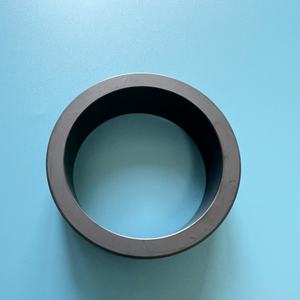
(Silicon Carbide (SIC)Refractory Ceramic Plate)
REQUEST A QUOTE
RELATED PRODUCTS
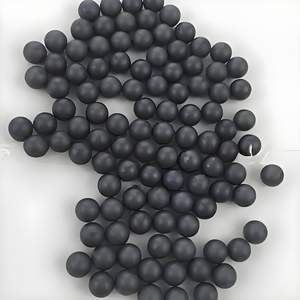
SiC Silicon Carbide Ceramic Tube, High Hardness and Excellent Performance
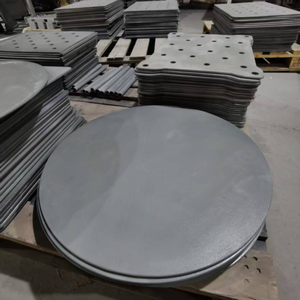
High Quality Silicon Carbide Flat Ceramic Ignitor Igniter Kit Hot Surface Ignition Rod Dryer Fabrication Services Product
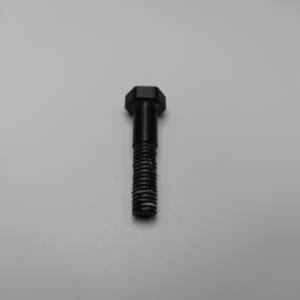
Silicon Carbide Ceramic Reaction Sintering Sic Ceramic Structural Rods

Abrasive Silicon Carbide Ceramic Tubes for Industrial Applications
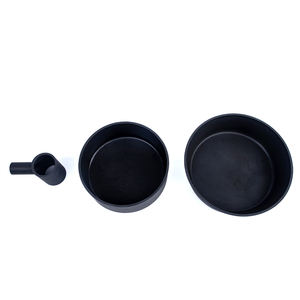
High-Temperature Resistance Silicon Carbide Ceramic Disc Industrial Ceramic with Factory Processing Service at Competitive
